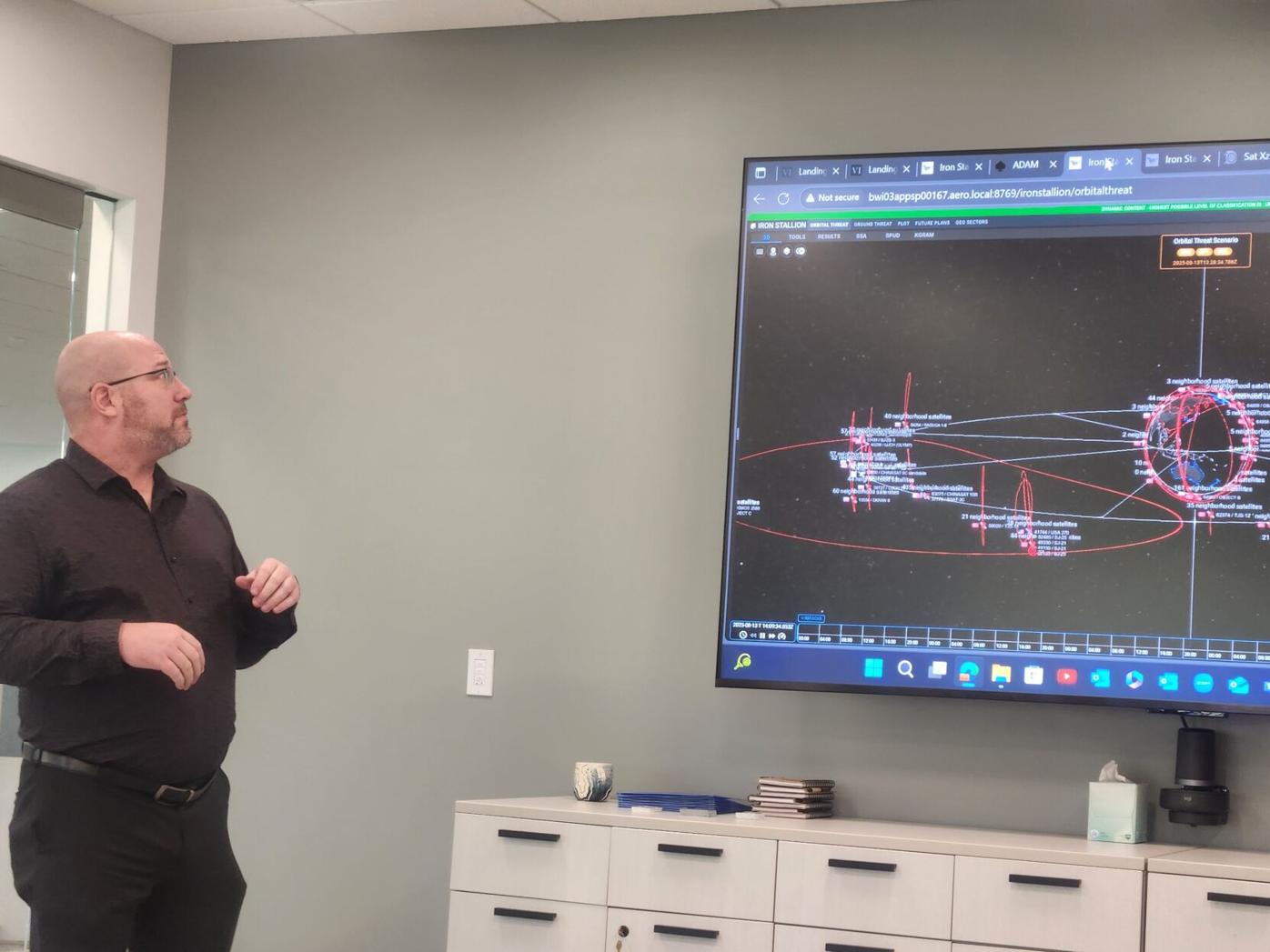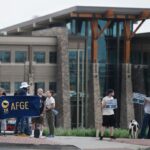In Colorado Springs, KBR employees help map global satellite traffic for Space Force

Mary Shinn, The Gazette
As thousands of satellites go to orbit each year, traffic control is getting ever more complicated.
Colorado Springs-based employees with KBR are among those ensuring the global picture and potential problems are clear to the Space Force and other clients with satellites that need to fly unhindered.
Houston-headquartered KBR, a company with 650 employees in town, works for the Space Force as one of the contractors within the Joint Commercial Operations cell, helping to visualize how tens of thousands of objects are circling the world.
Imagine spinning 30,000 weights on the end of a rubber band at different rates and speeds. The ensuing chaos is similar to what’s going on in orbit, explained David Pyatt, senior technical adviser for space systems operations during a presentation at the company’s offices at 2424 Garden of the Gods Road. The company recently moved into a space in the large office complex that has filled up in recent years.
Response to new details about Space Force's model for part-timers: 'It makes zero sense'
“If you’re going to fly through that environment, then you’re probably going to want to know as best as you can the picture of that environment,” Pyatt said.
KBR’s software, called Iron Stallion, can draw that picture and show a user where problems might arise between two satellites getting too close together or where debris from a satellite that’s broken up is headed, Pyatt explained. The software has about 30,000 objects in its catalog, but on any given day or time it is keying in on 3,400 objects.
The company uses data from the Unified Data Library, a product of Colorado Springs-based Bluestaq. The library is built from data gathered by private satellites and their wide-variety of sensors, including those that pick up light and convert it into electrical pulses and those that listen for radio frequencies.
An earlier version of the Iron Stallion software is used inside Space Command and the National Space Defense Center, which is supported by the Joint Commercial Operations cell, Pyatt said. It’s also been adopted by international companies, who purchase the data separately from the Unified Data Library.
The new iteration of Iron Stallion software is cloud-based, and clients can use it with just an account log-in, said Brian Young, vice president of space operations within the National Security Solutions business unit.
'State of the Bases' is strong despite challenges, Space Force commanders say
Engineering the next wave
In addition to maintaining and building out the software, KBR works on building concepts into prototypes in Colorado Springs.
In one case, the company is building artificial intelligence to translate short-wave radio transmissions to pilots into written text. It also has a playback feature so pilots can double check the audio. While lots of voice-to-text systems exist, this one has been specifically trained on the fuzzy audio that pilots rely on and could function as an assistant to pilots, said Randall Musselman, director of radio frequency engineering for the company. It’s an idea the company is developing for the Air Force Tactical Exploitation of National Capabilities Directorate.

Randall Musselman, director of radio frequency engineering for KBR, explains a prototype Wednesday that translates short-wave radio transmissions that pilots use into text.
Mary Shinn, The Gazette

Randall Musselman, director of radio frequency engineering for KBR, explains a prototype Wednesday that translates short-wave radio transmissions that pilots use into text.
Although the idea has been prototyped on a laptop, Musselman foresees a time when the same function could be completed by a piece of hardware in a plane.
KBR also leverages its space expertise
In addition to its work in town, KBR has a large portfolio of expertise that includes training astronauts and supporting NASA’s mission control. It also won a recent contract to upgrade and modernize the Air Force Maui Optical and Supercomputing site.
The company occupies 130,000 square feet across several offices in town, including space downtown, one in Briargate and near two near south Powers Boulevard. In one of those spaces the company focuses on modernizing satellite communications infrastructure.
“Our team designs, develops, and then goes out and fields these capabilities that modernize those legacy Space Force systems out in the field. We do that in Greenland. We do it in Guam. We do it all over the world,” he explained.
The company’s presence in town has expanded with the purchase of LinQuest last year, a company that was focused on advanced engineering, data analytics and digital integration, a news release said.
Contact the writer at mary.shinn@gazette.com or (719) 429-9264.









